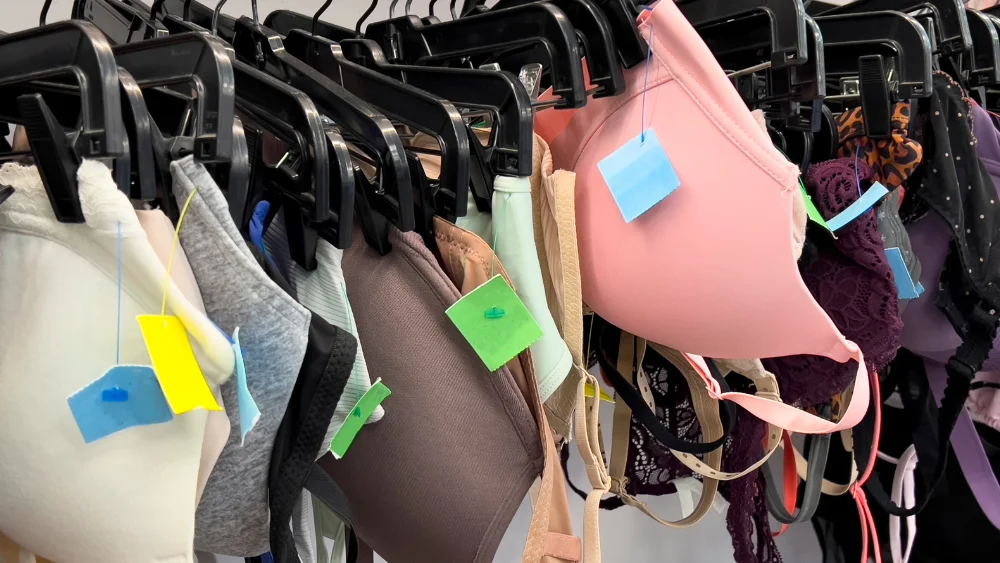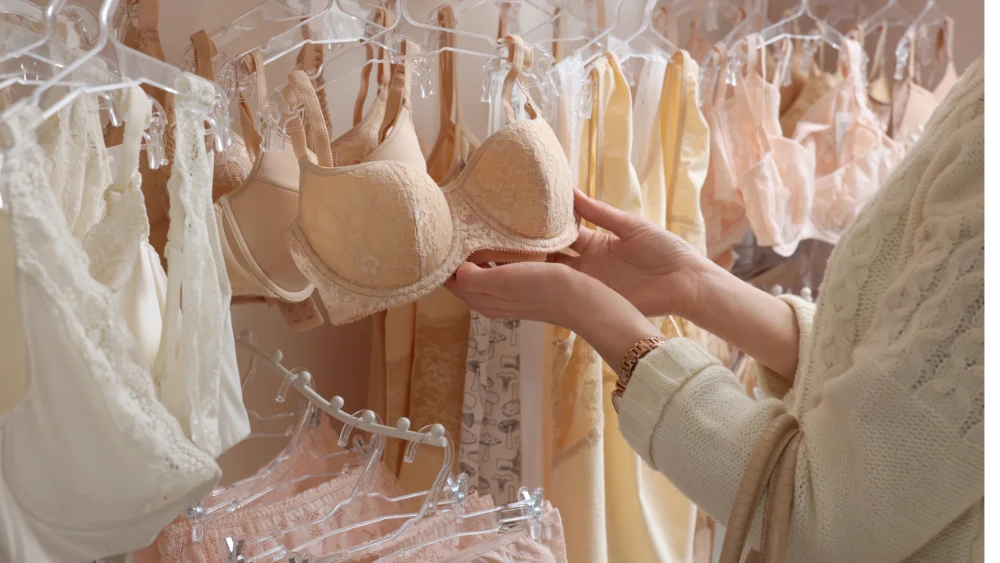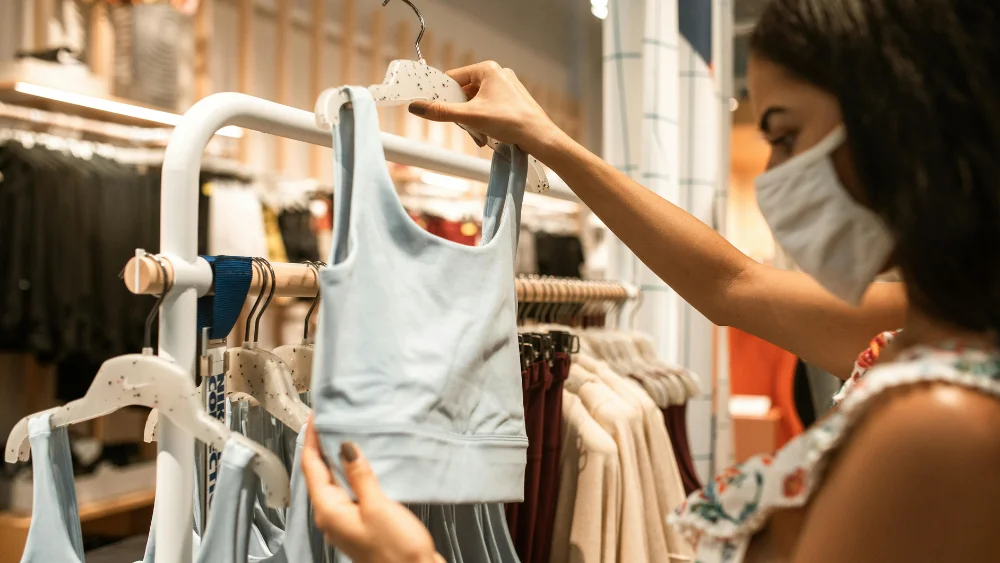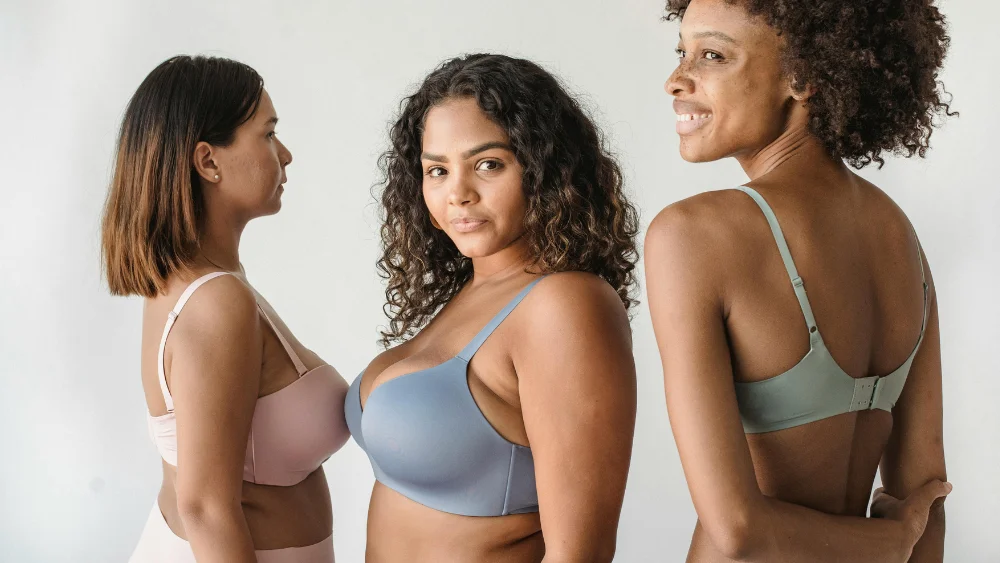Thinking about launching your own intimate apparel line? This practical and empowering guide walks you through every step to start a lingerie company —from brand identity and fabric selection to marketing and production—so you can turn inspiration into action and design a brand that truly reflects your vision.
Table of Contents
A Dream That Begins with Lingerie
For many women, the spark of a dream begins with something as intimate as a piece of lingerie. Lingerie is not merely a hidden part of our daily wardrobe—it is the first expression of self-identity and bodily freedom. For countless female entrepreneurs, the desire to start a lingerie company doesn’t stem from a spreadsheet or market report, but from that quiet sigh in front of the closet: “Why can’t I find lingerie that truly fits me?”
Today, the lingerie industry is undergoing a quiet revolution. Once dominated by conventional aesthetics and rigid standards, the landscape is shifting as consumers awaken to a deeper sense of autonomy. Women are now seeking not only comfort and beauty, but also meaning—hoping to find themselves understood and respected in the garments closest to their skin. This evolution has opened up a wide window of opportunity for those bold enough to start a lingerie company—brands that carry emotional warmth, values, and real connection.
Yet the very first step often feels like the most daunting: How much money do I need? Where do I find a manufacturer? What if I can’t draw? Am I starting too late? These questions come like waves, making the dream feel distant, even impossible.
But you are not alone.
This article is written for you. Whether you’re working with a blurry spark of inspiration or have already filled pages with sketches and budgets, we’ll walk you through the entire journey to start a lingerie company—one practical, tangible, and achievable step at a time. From the very first stitch to the final label, we’ll help you weave your vision into a brand that is truly your own.
Market & Positioning: Who Are You Creating For?

Before you touch your first piece of fabric or sketch out your first design, there’s one question you must answer more clearly than any blueprint: Who are you creating for?
Lingerie isn’t a generic product—it’s an intimate, deeply personal garment. It touches the skin, carries comfort, beauty, confidence, and sometimes even emotion. If you want to carve out your place in this industry, the first step to start a lingerie company is not trying to appeal to everyone, but understanding exactly who you are here to serve.
A Diverse Market, Full of Possibilities
Today’s lingerie market is no longer ruled by the outdated idea that “sexy sells everything.” From supportive sports bras to inclusive designs for plus-size women, from sustainable fabrics to genderless lingerie expressions—each lane is a vibrant niche, full of potential.
Sexy lingerie focuses on visual impact and intricate detailing, perfect for emotionally expressive and bold aesthetics.
Activewear lingerie emphasizes support and function, ideal for aligning with wellness or fitness-driven lifestyles.
Plus-size lingerie is on the rise but still underserved—especially in styles that blend beauty and comfort.
Eco-conscious lingerie uses sustainable materials and transparent production practices, appealing to younger, purpose-driven consumers.
You don’t have to do everything perfectly, but you do need to be clear. When you start a lingerie company, clear positioning becomes the foundation for every product decision, every brand message, and even your cost control strategy.
Visualizing Your Ideal Customer
Begin by imagining your dream customer: How old are they? What is their income level? What lifestyle do they lead? Do they care about sustainability? Do they value style or prioritize comfort? Will they be wearing your lingerie at the office, at the gym, or while winding down at home?
Let’s say your brand is aimed at 25–35-year-old independent urban women. She works hard during the day and practices yoga in the evening. She values all-day comfort and minimalistic aesthetics, and she’s willing to invest in brands that reflect her values. This shapes your entire approach—product design, brand tone, and even your pricing model.
Your Position Determines Your Price
Once you understand who you’re creating for, you can define your pricing strategy with confidence. Are you offering affordable essentials for frequent wear? Or limited-edition, high-quality pieces with luxurious fabrics and craftsmanship? Your price point doesn’t just affect your target audience—it influences your manufacturing approach, partnerships, and inventory planning.
To start a lingerie company that resonates and sustains, positioning isn’t optional—it’s essential. The clearer your focus, the stronger your foundation for growth.
Product Development: From Concept to First Sample

A truly moving lingerie brand doesn’t begin with a profit model—it begins with a product that feels right when worn. Sometimes, it starts with that quiet wish whispered in front of a mirror on countless mornings: If only there were a bra that didn’t dig in, didn’t slip, didn’t overheat, and still looked beautiful.
If you want to start a lingerie company, this is where your journey becomes tangible—by transforming a feeling into something real.
Design: Begin with the Body, Not the Trends
Lingerie design is never just about shapes or lace; it’s an interpretation of intimate needs. These needs may be support, comfort, freedom of movement, or emotional expression. Great lingerie design doesn’t scream to be seen—it whispers, “I understand you.”
When you start a lingerie company, you can either collaborate with a professional lingerie designer who can translate your ideas into technical drawings, or take a more hands-on approach: sketch your own concepts, drape fabrics over your body to test fit, or even explore 3D modeling. Whichever route you take, the most important question is always: What problem is your product solving for the person wearing it? What feeling do you want to deliver?
Fabric Selection: A Dialogue with the Skin
If design is the soul, fabric is the language the skin listens to. It determines whether your lingerie feels breathable or stifling, smooth or scratchy, fitted or saggy. More importantly, it speaks volumes about your brand’s philosophy.
Organic cotton: Ideal for sensitive skin, honest and comforting in its simplicity.
Modal or bamboo fibers: Soft, breathable, and eco-conscious.
Lace and mesh: Bold, sensual, and full of visual drama.
Recycled nylon or eco-polyester: A statement of care for the environment.
You might also consider blends—combinations that bring together the best of support and comfort. When you start a lingerie company, remember: fabric is not just a sensory choice, it’s a reflection of your brand’s values.
Sampling & Cost: Your First Real Investment
Turning your design and fabric concept into a physical garment is where the dream begins to take shape. This is called sampling—and it’s more than just a technical step. It’s your very first moment of touching the dream.
Sampling typically involves two phases:
The first sample (fit sample): Tests the structure, pattern, and basic construction.
The second sample (pre-production or sales sample): Finalizes all details before bulk production.
Depending on the complexity and the factory, sampling costs can range from $500 to $5,000.
Key areas to focus on during sampling:
Are the measurements accurate? Do the sizes feel inclusive?
Are seams and bindings clean and professional?
Does the wearing experience meet your expectations?
Does the final product match the intended fabric choice?
Avoid rushing into bulk production. A well-executed sample is the blueprint for every piece that follows. When you start a lingerie company, your first sample isn’t just a prototype—it’s a preview of your brand’s integrity.
Finding a Manufacturer & Sampling: The Bridge Between Dream and Reality

You’ve got your design. You’ve created your first sample. The dream is no longer abstract—it’s beginning to take shape. Now comes one of the most critical steps if you want to start a lingerie company: transforming your ideal lingerie into hundreds or even thousands of perfectly consistent products. This phase—manufacturing—can make or break your brand.
Unlike T-shirts or jeans, lingerie requires extraordinary precision. It involves specific expertise in fabric elasticity, stitching techniques, size grading, and the delicate balance of support and softness. To start a lingerie company that delivers consistent quality, you don’t just need a factory—you need a manufacturing partner who understands your brand values.
How to Choose the Right Lingerie Factory
Working with a manufacturer should always be viewed as a two-way relationship. You’re evaluating whether they can bring your vision to life—and they’re assessing whether your project is worth their time and resources. Here are some critical factors to consider:
MOQ (Minimum Order Quantity): Crucial for startups. Many factories have MOQs of 1,000–3,000 pieces, but some offer more flexible terms for sample or small-batch runs (300–500 pieces).
Expertise: Do they specialize in lingerie? Are they experienced in your niche—sports bras, sexy lingerie, plus-size, or sustainable underwear?
Communication & Production Stability: Do they assign a dedicated account manager? Are they responsive and able to accommodate change requests quickly?
Quality Control Systems: Can they provide third-party inspection? Do they have verified reviews or case studies from past clients?
When you start a lingerie company, your factory isn’t just executing your designs—they’re safeguarding your product integrity. It’s worth taking the time to find the right partner rather than settling for the cheapest option.
Sampling Communication: The More Precise the Language, the Better the Result
To ensure your sample production runs smoothly, prepare a clear and professional tech pack or reference document, including:
Measurement Charts: Detailed sizing across bust, underbust, side seams, strap lengths, etc.
Fabric Specifications: Fabric type, weight (gsm), composition, and source for both outer and lining materials.
Construction Notes: Stitch types, binding techniques, elasticity standards.
Design References: AI files, hand sketches, or even Pinterest images for visual cues.
Special Requirements: Eco-certification, branded labels, hangtags, wash instructions, etc.
The clearer your instructions, the smoother the process. Precision here prevents costly revisions later on.
Tips for Controlling Initial Production Costs
When you start a lingerie company, your early production decisions can dramatically affect your finances. Here’s how to stay efficient:
Begin with Small Batches: Choose factories that support sampling + low-MOQ production, even if it costs slightly more per unit—this reduces inventory risk.
Use Existing Molds or Patterns: Collaborate with your factory to adjust existing templates, lowering development costs.
Focus on Core Products: Rather than launching 10 colorways and 5 sizes, perfect 1–2 signature items.
Compare Multiple Quotes—but Don’t Only Chase Price: The cheapest option is rarely the best—especially for intimate apparel, where quality issues are costly and reputationally damaging.
Based on industry experience, a small-scale production batch can cost anywhere from $5,000 to $15,000, depending on the complexity of the design, order quantity, fabric type, and added details.
Brand Identity & Legal Registration: Giving Your Name Warmth and Strength

In a world overloaded with visuals, a brand is no longer just a name or a logo. It’s a feeling—a quiet moment that happens when someone clicks on your website for the first time, when she opens the package and sees your hang tag, or when she slips into your lingerie and exhales, feeling seen, supported, and understood.
When you start a lingerie company, you’re not just creating products; you’re shaping how someone feels when they interact with your brand. And that emotional resonance is what turns first-time buyers into loyal advocates.
Crafting a Visual Language That Sticks
Visual identity is the first language your brand speaks. And because lingerie is already a highly emotional product, your visual storytelling must be intentional and impactful. Here are a few key elements to consider:
Logo: Keep it simple, but memorable. Curved lines, feminine silhouettes, or natural motifs can echo the soul of your brand.
Color Palette: Are you a soft, muted nude? Or a bold, electric violet? Your color choices speak volumes and influence how your brand is perceived across packaging, web design, and ads.
Packaging: This isn’t just a cost item—it’s an emotional trigger. Eco-friendly materials, handwritten notes, and thoughtful details all contribute to a brand that feels human.
Even if you’re just getting started, consider creating a basic brand style guide—just a few pages to help ensure consistency across your website, social media, e-commerce platforms, and promotional materials. When you start a lingerie company, brand coherence builds trust.
The Power of Your Brand Story
A powerful story connects deeper than any discount ever could. Especially in the lingerie industry—where the product touches the most vulnerable parts of the body—customers are not just buying fabric. They’re buying identification, validation, and care.
Ask yourself:
Why did you decide to start a lingerie company?
What gap are you trying to fill?
Have you experienced moments of discomfort, invisibility, or frustration that shaped your purpose?
Tell that story in your own voice. Speak like one woman to another. Let your vulnerability and authenticity become the thread that ties your brand to the hearts of your audience. You don’t need to be perfect—you just need to be real.
Protecting Your Brand Legally
While building a heartfelt brand is essential, so is protecting it with legal safeguards. Once you’re ready to enter the market, you must ensure your brand is legally recognized and protected:
Trademark Registration: Apply early for both your English and Chinese brand names and logo. Be sure to include Class 25 (clothing) and any other relevant categories to prevent copycats.
Business Registration: Depending on your scope, register as a sole proprietor, small business, or limited liability company. This will help you collaborate with manufacturers and online platforms.
Compliance Certifications: If you’re targeting high-end markets or planning to export, start with certifications like OEKO-TEX®, BSCI, and ISO. Choose suppliers who meet these standards to set your company apart from day one.
These legal steps aren’t just red tape—they’re your brand’s armor. They are essential for scaling, entering new markets, and even attracting future investment.
E-commerce & Marketing: Bringing Your Brand to Her Fingertips

You’ve built the product. You’ve crafted the story. You’ve shaped the identity. Now comes the next crucial step: bringing it all to the women who truly need it. When you start a lingerie company, remember—your first battleground isn’t a department store shelf. It’s the glow of a smartphone screen, the pause in a social media scroll, the click that leads to connection.
For most new brands, the online world is not just an entry point—it’s the main stage. But success isn’t just about choosing a sales platform. It’s about building a full digital ecosystem that brings your brand to life.
E-commerce Platforms: Where Should You Begin?
Choosing the right platform is about more than convenience. It defines how you connect with your audience and how much control you have over the brand experience.
Independent Websites (Shopify, WooCommerce): Ideal for full creative control. Great for brand storytelling, visual coherence, and owning customer data. Requires upfront investment in design and development.
Marketplaces (Amazon, etc.): High traffic and strong conversion potential, but with strict rules and fierce competition. Better for exposure and sales volume, but may dilute brand identity.
Content-Driven Platforms (like TikTok Shops,): Perfect for emotional engagement and social commerce. These are the spaces where brand recognition begins—ideal for lingerie brands that prioritize emotional connection.
A smart approach for those who start a lingerie company is to begin with a solid independent site, then expand across content and marketplace platforms with consistent branding.
User Experience: It’s Not Just Selling—It’s Building Trust
In lingerie, trust is everything. When someone wears your creation next to their skin, she’s trusting you with her comfort, her confidence, and sometimes even her vulnerability.
That trust starts on your website:
Clear structure and mobile-first design: Over 80% of customers will shop via mobile. Your site must be fast, intuitive, and beautifully responsive.
Detailed product pages: High-quality model images, close-up shots, fit recommendations, fabric info, and care instructions all help customers make confident decisions.
Smart product tags: Labels like “great for small busts,” “first-time must-have,” or “sleep-in comfort” create immediate emotional identification.
Streamlined checkout: Fewer clicks, more payment options, and discreet packaging—these little things greatly boost conversions.
Don’t Wait for Perfection—Start Marketing Now
Many entrepreneurs make the mistake of waiting for the perfect product, perfect photoshoot, or flawless website before launching their brand voice. In reality, building brand awareness begins long before your first product is sold—and continues long after.
Marketing Essentials: Content, Emotion, and Connection
Social Media: Choose 1–2 platforms that align with your target audience (e.g., Instagram, TikTok). Post regularly with product visuals, behind-the-scenes moments, customer stories, and brand values.
Collaborate with KOLs and KOCs: Partner with creators who align with your mission. Even micro-influencers can drive deep impact through genuine storytelling.
Email Marketing: Don’t underestimate this “old-school” tool. It’s vital for retention and building a loyal customer base. Share product drops, style tips, and personal notes from the founder.
SEO & Content Strategy: Write blog posts about topics like “How to Choose the Right Bra for Sensitive Skin” or “What Makes Comfortable Lingerie Actually Comfortable.” This boosts visibility and positions your brand as an authority.
When you start a lingerie company, marketing isn’t about persuading people to buy—it’s about attracting the right people by showing them they’ve finally found what they’ve been looking for.
Cost Breakdown & Financial Planning: Every Dollar Counts When You Start a Dream
Many entrepreneurs carry a fire inside—but often, that fire flickers when met with a hard question: How much money do I actually need to start a lingerie company?
Starting a lingerie company doesn’t require overnight wealth. But it also isn’t something to approach casually. Every dollar you invest is a commitment to your dream. Planning your expenses with intention isn’t just good business—it’s a gesture of respect for the vision you’re building.
Startup Costs: Every Line Item Matters
Here’s a breakdown of the major expense categories you’ll face when you start a lingerie company, along with a basic cost range to guide your planning:
| Category | Estimated Cost (USD) | Notes |
|---|---|---|
| Product Design & Sampling | $500 – $5,000 | Depends on number of styles, outsourcing design, and sampling rounds |
| Initial Production | $5,000 – $15,000 | Includes fabric, labor, packaging; varies by MOQ and complexity |
| Brand Development | $1,000 – $5,000 | Logo, visual identity, brand story and copywriting |
| Website & E-commerce | $1,000 – $6,000 | Covers website build, domain, hosting, plugins/app integrations |
| Marketing & Promotion | $2,000 – $10,000 | Social ads, KOL/creator partnerships, photography, content creation |
| Legal & Registration | $300 – $2,000 | Trademark, business entity setup, legal compliance advice |
| Miscellaneous Costs | $1,000 – $3,000 | Shipping, sample handling, office supplies, photoshoots |
Total Estimated Range: $10,000 – $45,000, depending on your positioning and business model.
This isn’t a terrifying number—it’s the soil where your dream will take root and grow. When you start a lingerie company, the money you spend early on isn’t an expense. It’s an investment in confidence, clarity, and capability.
Two Smart Budgeting Mindsets
1. “Start Small” Is Not Playing It Safe—It’s Playing It Smart
You don’t need to launch ten styles, cover every platform, or aim for viral fame on day one. Think like a sculptor—carve out one beautiful product, connect with one type of customer, build a reputation. Then grow from there.
Start with 1–2 signature pieces. Focus on one core platform. Build your first budget around those essentials. When you start a lingerie company, the danger isn’t limited funding—it’s scattered focus.
2. Build in Flexibility and Space for Growth
Even the most detailed budget can’t predict everything. Sampling might need another revision, platform fees may increase, ad campaigns might underperform. Set aside at least 10%–15% of your budget as a contingency fund for the unexpected.
Also account for ongoing operational expenses—monthly subscription fees, storage costs, recurring ads, and customer service support. These are the costs that keep your brand alive long after launch day.
Conclusion: You Can Start Right Now
Maybe you’re still hesitating, holding onto a spreadsheet of costs while your mind spins with a thousand “what ifs”:
What if I don’t know how to design?
What if no factory wants to work with such a small order?
What if the product doesn’t sell at all?
But let me gently remind you of one simple truth—every brand you admire today began as a single idea. A rough sketch, a scrap of fabric, a quiet voice saying, “I want to create something different.”
Success doesn’t begin with certainty. It begins with a willingness to try.
You don’t have to be perfect all at once.
You only have to take that first step.
If you’ve made it this far—researching your market, understanding your customer, mapping out the process, and reading this guide—you are already ahead of 90% of people who dream of starting something but never begin.
That final 10%?
It’s not about luck. It’s not about talent.
It’s about action.
Sketch that first idea. Reach out to that first factory. Write the first sentence of your brand story. Open that blank Notion page and title it: “DAY 1.”
Because if you truly want to start a lingerie company, the world is waiting for your vision. Whether your brand is soft or sensual, inclusive or edgy—it can be anything, as long as it’s true. As long as it’s you.
And you?
You can start a lingerie company.
You can start messy.
You can start afraid.
You can start imperfect.
But you can start—right now.

